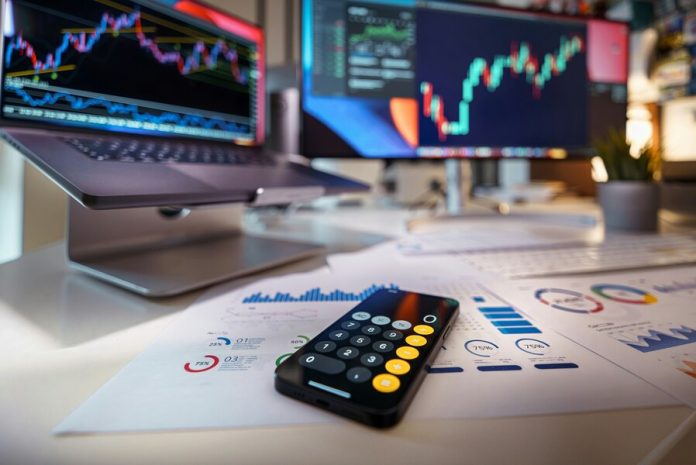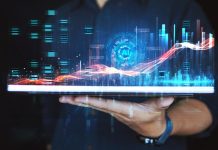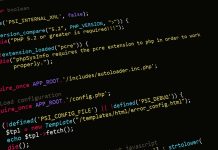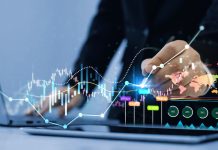
By Indiana Lee
In an uncertain economy, business leaders need to learn how to harness advanced technologies to remain competitive. Advanced analytics can provide valuable insights into the internal and external forces that affect business operations, allowing leaders to make better decisions that lead to enduring business success.
The future is unknown and unknowable — this is always true. Yet, by harnessing data, businesses can peer into the murky haze of the coming weeks and months to discern something eerily close to the truth.
The potentially prophetic power of data is particularly potent in times of economic uncertainty, which is to say, right now. Economists around the world are divided on exactly what path the currently unstable economy will take; some are convinced that the economy will continue to weaken, while others predict stability or even strengthening. For businesses to weather the oncoming storm of unknown economic conditions, they need to deploy effective data strategies, ideally by utilizing the tools and techniques of advanced analytics.
Advanced analytics refers to a variety of data analysis techniques used primarily to help businesses predict the future and make better decisions, which can be essential for success during times of economic turbulence. Businesses across industries can benefit from advanced analytics, but only if leaders have a firm grasp on what advanced analytics is and how to use it to the greatest advantage.
What Is Predictive Analytics?
Arguably the most important field within advanced analytics, predictive analytics uses historical data to forecast future outcomes. Predictive analytics isn’t necessarily new; those well-versed in statistical modeling have been manually conducting predictive analysis for decades, even centuries. However, with the advent of big data and the application of advanced technological tools, like machine learning algorithms, predictive analytics has become remarkably accurate, allowing for sharp strategic decision-making.
The most common tool in predictive analysis is regression analysis, which helps data analysts (and business leaders) determine the relationships between variables. Using these relationships, data scientists can recognize historical trends and forecast those trends into the future. There are different types of trend forecasting that can be valuable to business leaders, regardless of the prevailing behavior of the economy.
Types of Trend Forecasting
Predictive analytics can have dozens of business applications. Some businesses use predictive analytics to foresee machine malfunction, allowing for the development of more effective machine maintenance schedules that prevent unnecessary and expensive downtime. Other businesses employ predictive analytics modeling to determine staffing needs.
In times of economic uncertainty, any additional information that can aid in decision-making and planning can be valuable. However, there are a few types of trend forecasting that can be of particular value to businesses looking to maintain stability and competitiveness in the coming months.
Short-term vs. Long-term Forecasting
Short-term forecasting focuses on the next three to 12 months, which can help business leaders respond quickly to imminent changes affecting business success. Long-term forecasting makes projections between one and four years into the future, which helps business leaders make broader plans for business growth.
Financial Forecasting
Big data is transforming financial practices in various ways, from helping leaders assess lending options to enhancing financial services. In financial forecasting, businesses are predicting various factors associated with monetary performance. Financial models might calculate market share, stock market trends, individual product sales, and more. These can be essential in helping business leaders develop budgets and make other critical financial decisions.
External Macro Forecasting
Various economic factors can impact individual businesses in various ways. External macro forecasting strives to determine how a business will be affected by broad economic trends, like inflation, tax rates, labor supply, government activities, and more. This type of trend forecasting can give business leaders some direction in goal setting, especially if a business is planning to expand in the near future.
Internal Forecasting
Internal business forecasts review a business’s operations, revealing details of its internal capacity, such as limitations that may slow growth or opportunities for greater investment of resources. Because business leaders have more control over their internal processes than external economic factors, having insight into the future of the business’s internal workings is exceedingly valuable for creating stability and success when the economy is unreliable.
Customer Behavior Forecasting
When a business knows what kind of consumer behavior to expect, leaders can develop marketing and sales strategies to capitalize on that behavior, which ultimately results in higher profits and better financial stability. Advanced analytics that helps reveal customer behavior are exceedingly valuable when the economy is volatile because continuing to connect with customers is the only way a business will survive troubled economic times.
Demand Forecasting
Arguably the largest field within trend forecasting, demand forecasting helps businesses understand the future demand for their products or services. Even when the economy is stable, demand forecasting can be useful in helping businesses weather seasonal highs and lows, but when the economic forecast is uncertain, long-term demand projections can help businesses develop realistic expectations for sales in the coming months and years. There are two primary types of demand forecasting:
- Passive demand forecasting, which utilizes past sales data to predict demand. This method is only reliable if a business’s sales history is stable and if the economic activity of the previous time reflects that of the future.
- Active demand forecasting utilizes market research, economic outlook, growth projections, and other external factors to predict demand. This method works better for new businesses that may lack historical sales data and for businesses that need to determine how new external factors will impact demand.
How to Harness Advanced Analytics
Small and medium-sized businesses new to advanced data analysis have access to various tools to aid in the integration of predictive analytics into the decision-making process. In fact, during times of economic uncertainty, adopting technological advancements like software and AI can be essential to maintaining efficiency across business processes. In terms of big data analytics for trend forecasting, there is no more valuable technological tool than artificial intelligence.
In the past, data scientists may have used all manner of manual methods and models for collecting and crunching data to reveal insights. Market research, sales force composites, expert opinions, and more may have contributed a picture to aid business leaders in decision-making. However, the application of machine learning, generative AI, and other AI solutions eliminates a significant amount of the guesswork that once went into forecasting, helping both data scientists and business leaders access more accurate predictions for the future.
Businesses may invest in any of the dozens of AI-backed predictive analysis platforms, some from big names in computing like IBM or Microsoft, or they may conscript data analysis firms to build a bespoke solution that suits their unique needs. In any case, AI is undoubtedly the future of predictive analytics, and investing in an AI-driven tool today will likely provide the insights businesses need to maintain stability into the future.
Predicting, Planning, Protecting
Though the future will always be shrouded in mystery, businesses can tease out some of its simpler secrets with the help of advanced analytics. By using AI to analyze big data, business leaders can peer into the time ahead to see the trends that are most likely to have a great impact on their business, which means they can make decisions that allow their business to survive and thrive.
“Uncertainty” is one of the scariest words to business leaders, and uncertain economic activity poses a real threat to business security. Fortunately, with advanced analytical tools and techniques, business leaders can achieve the stability they need to remain competitive, regardless of whether the economy crashes or soars.
About the Author
 Indiana Lee is a writer, reader, and jigsaw puzzle enthusiast from the Pacific Northwest. An expert on business operations, leadership, marketing, and lifestyle.
Indiana Lee is a writer, reader, and jigsaw puzzle enthusiast from the Pacific Northwest. An expert on business operations, leadership, marketing, and lifestyle.








